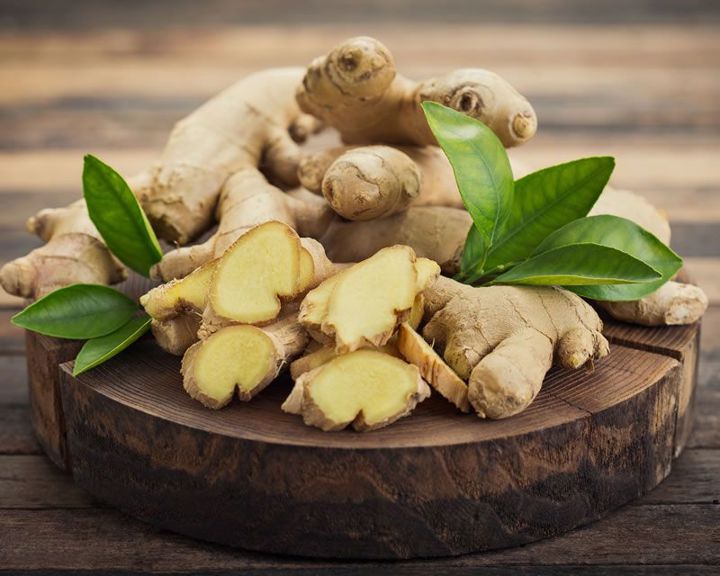Chronic back pain affects millions of individuals worldwide, significantly impacting their daily lives and overall well-being. While medical treatments exist for managing back pain, some individuals seek natural alternatives to complement their pain management strategies. One such approach involves incorporating anti-inflammatory spices into their diet. These spices possess powerful properties that can help reduce inflammation and provide natural pain relief. In this article, we will explore the top five anti-inflammatory spices for back pain patients, namely turmeric, ginger, cinnamon, cayenne pepper, and garlic, and delve into the beneficial effects they offer.
1, Turmeric.
Turmeric is a spice commonly used in cooking, and it contains a bioactive compound called curcumin. Curcumin has been extensively studied for its potential health benefits, including its anti-inflammatory properties.
Inflammation is a natural response by the body to injury or infection, but chronic inflammation can contribute to various health issues, including back pain. Curcumin has been found to inhibit certain molecules involved in the inflammatory process, which may help reduce inflammation and alleviate pain.
To enhance the absorption of curcumin in the body, it's often recommended to consume it with black pepper or pair it with a source of fat like coconut oil. Black pepper contains a compound called piperine, which can enhance the bioavailability of curcumin. Combining turmeric with a source of fat helps to dissolve and absorb the fat-soluble curcumin more effectively.
It's important to note that while turmeric and curcumin have shown promising results in some studies, more research is needed to fully understand their effects and to determine optimal dosages for specific health conditions. If you have chronic back pain or any other health concerns, it's always best to consult with a healthcare professional for personalized advice.
2, Ginger.
Ginger is a widely recognized spice known for its distinct flavor and numerous health benefits. It contains bioactive compounds called gingerols, which are responsible for its potent anti-inflammatory and analgesic (pain-relieving) properties.
Similar to turmeric, ginger can help reduce inflammation in the body, which may alleviate back pain. The gingerols in ginger have been shown to inhibit the production of inflammatory chemicals in the body, potentially reducing pain and swelling.
Ginger can be consumed in various forms to provide relief from back pain. Fresh ginger can be added to meals, grated into hot water to make ginger tea, or used in smoothies and juices. Dried ginger can also be used as a spice in cooking or steeped in hot water to make ginger tea.
It's important to note that while ginger can be beneficial, its effects on back pain may vary from person to person. If you have chronic back pain or any other health concerns, it's advisable to consult with a healthcare professional for a proper diagnosis and personalized treatment plan. They can provide guidance on how ginger can be incorporated into your overall pain management strategy.
3, Cinnamon.
While cinnamon is a popular and flavorful spice, its potential anti-inflammatory benefits are not as well-established as those of turmeric or ginger. While cinnamon does contain antioxidants, which can have anti-inflammatory properties, research specifically focusing on cinnamon's effects on inflammation and back pain is limited.
Cinnamon does have some potential health benefits, including its antioxidant and antimicrobial properties, and it may help regulate blood sugar levels. However, when it comes to alleviating back pain and reducing inflammation, the evidence is not as strong as it is for turmeric or ginger.
That being said, adding cinnamon to your diet can still be a healthy choice, as long as it's consumed in moderation. You can sprinkle cinnamon on foods like oatmeal, yogurt, or smoothies to enhance the flavor. Additionally, mixing cinnamon with warm water to make a soothing tea can be a pleasant and comforting beverage.
If you're experiencing chronic back pain, it's important to consult with a healthcare professional for a proper diagnosis and to discuss appropriate treatment options. They can provide personalized advice and recommendations based on your specific condition.
4, Cayenne Pepper.
Cayenne pepper contains an active compound called capsaicin, which is responsible for its spicy taste and also possesses pain-relieving properties. Capsaicin works by reducing the levels of a neurotransmitter called substance P, which is involved in transmitting pain signals to the brain.
When applied topically, capsaicin creams or ointments can desensitize the nerves in the area and temporarily alleviate pain. These topical products are commonly used for conditions such as arthritis, muscle strains, and neuropathic pain, including back pain.
It's important to note that capsaicin creams can cause a warming or burning sensation initially, but with regular use, the nerves become less sensitive to the compound, and the discomfort typically diminishes. It's always a good idea to follow the instructions provided with the specific capsaicin cream or consult with a healthcare professional for guidance on proper use and dosage.
However, if you have severe or chronic back pain, it's important to consult with a healthcare professional to determine the underlying cause of the pain and to explore appropriate treatment options. They can provide a comprehensive evaluation and recommend a suitable approach for managing your back pain.
5, Garlic.
Garlic is indeed a versatile and widely used ingredient that offers various potential health benefits. While it's primarily known for its antimicrobial properties, it also contains sulfur compounds that may possess anti-inflammatory effects.
Research suggests that the sulfur compounds found in garlic, such as allicin, may help reduce inflammation in the body. Inflammation can contribute to chronic conditions, including back pain. By incorporating garlic into your meals, you may potentially help manage inflammation and promote overall health.
While garlic's anti-inflammatory properties are promising, it's important to note that its effects on back pain specifically have not been extensively studied. Therefore, while garlic may have some potential benefits, it should be considered as part of an overall healthy diet and lifestyle, rather than a standalone treatment for back pain.
If you're experiencing persistent or severe back pain, it's crucial to consult with a healthcare professional for a proper diagnosis and to discuss appropriate treatment options. They can provide personalized advice and recommend specific strategies to help manage your back pain effectively.
Back pain can be a debilitating condition that affects individuals' quality of life. Seeking natural pain relief options is a priority for many individuals, and incorporating anti-inflammatory spices into their diet can be a promising approach. Turmeric, ginger, cinnamon, cayenne pepper, and garlic all possess potent anti-inflammatory properties, making them valuable allies in the battle against back pain. Whether consumed in meals, teas, or topical applications, these spices offer a natural and accessible means to reduce inflammation and alleviate pain. However, it is essential to consult with a healthcare professional for a comprehensive diagnosis and treatment plan tailored to individual needs. By combining these anti-inflammatory spices with proper medical guidance, individuals can work towards finding relief and enhancing their overall well-being.





Comments
Post a Comment